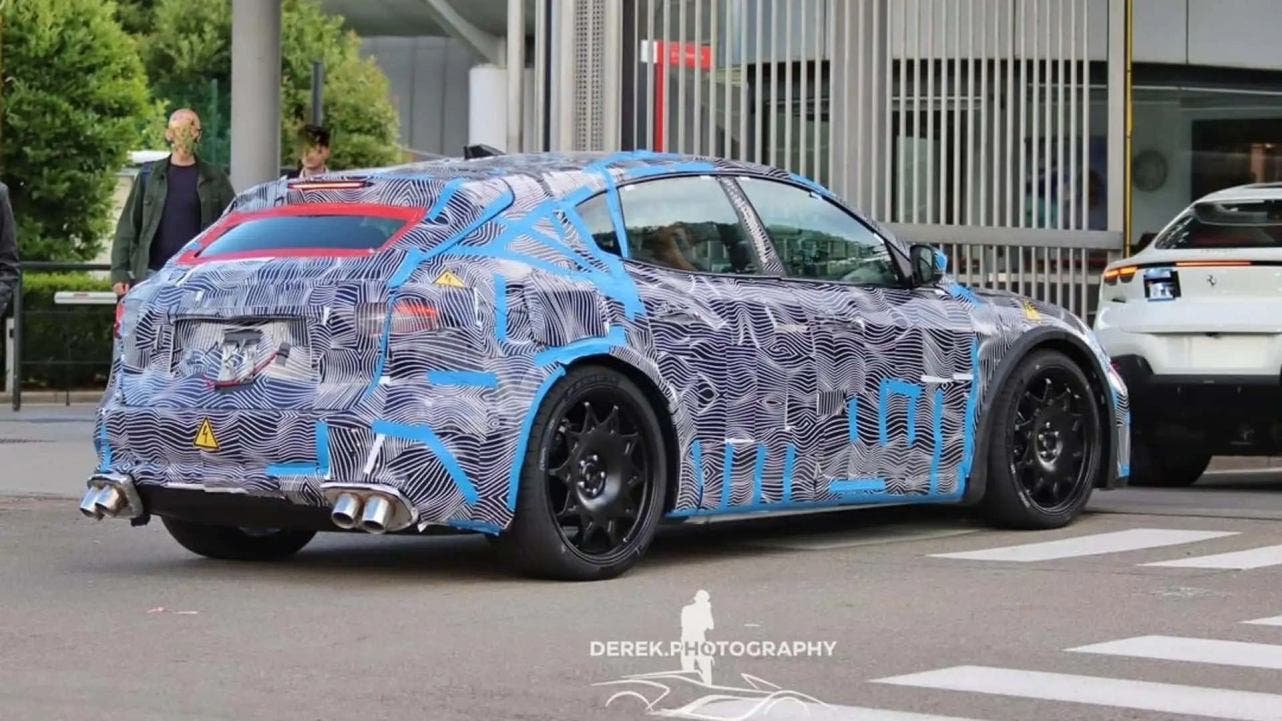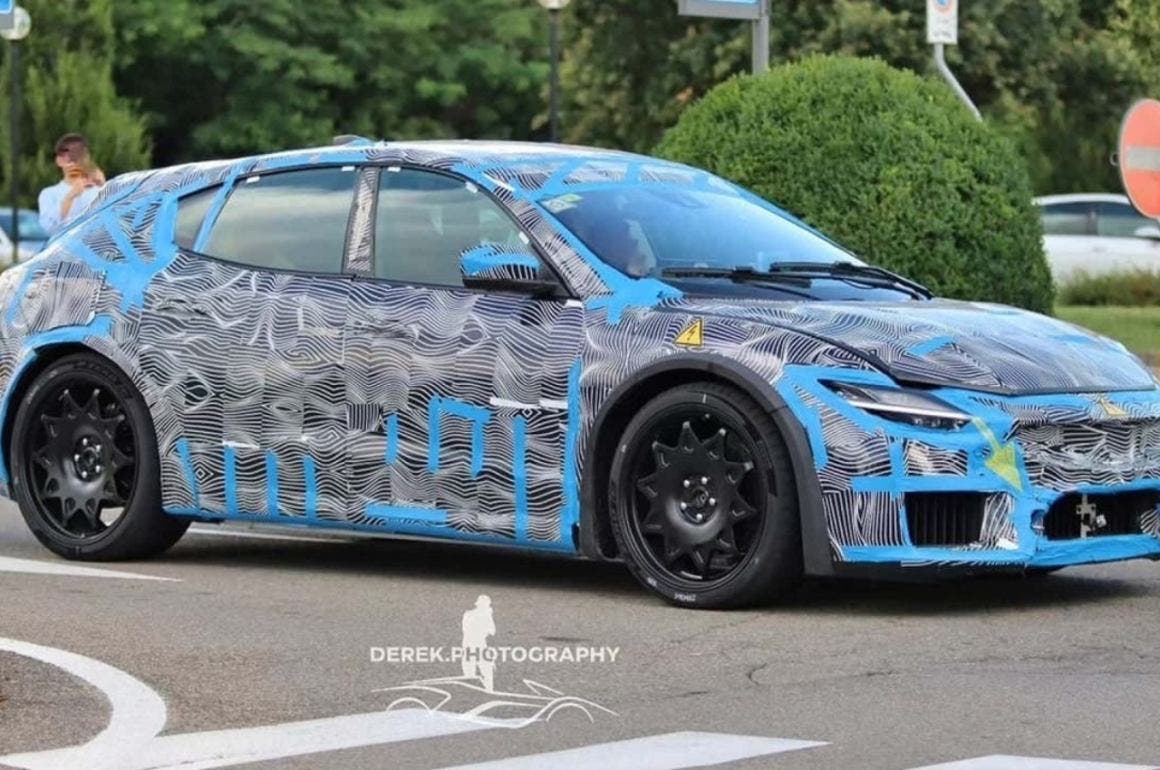The debut of Ferrari‘s first electric car is still some time away. Specifically, the official presentation is expected at the end of 2025, while commercialization will have to wait until the first months of 2026. Its production will take place at the new E-Building recently presented by the Maranello-based car manufacturer, which will handle everything related to the brand’s electric cars. In the meantime, a prototype of Ferrari’s first electric supercar has been spotted.
Ferrari: the Prancing Horse’s first electric car caught during initial tests in Maranello

The shots captured by Derek Cornelissen, known on social media as Derek Photography, show a heavily camouflaged vehicle with lines reminiscent of the Maserati Levante. The headlights, however, seem to be the same as those of the Ferrari Roma. Only the wheels are visible, which will likely be different on the final model. The prototype is also equipped with four exhaust pipes, clearly fake, as yellow stickers indicating high voltage are present on the bodywork. This indicates that it is a fully electric vehicle.
In all likelihood, the lines of the first electric Ferrari will be very different from the prototype featured in these images. The car manufacturer, in fact, had used a different body during tests with the prototype for the recent 12Cilindri: the same could happen with the mule of the first electric Ferrari. The goal is to not reveal too much about this vehicle and, indeed, there isn’t much information about it.
Ferrari’s CEO, Benedetto Vigna, has only spoken about the sound of the electric car, stating that it won’t be “fake” like many other electric cars on the market, but will be authentic and unique. According to the latest rumors, Ferrari‘s first electric supercar should cost over 500,000 euros and increase the Maranello company’s annual production from 14,000 to 20,000 units per year. At the moment, these are news not confirmed by the company. Although the Prancing Horse is focusing its efforts on electric vehicles, with a second vehicle already in production, it will not abandon combustion engines. The company has in fact declared that it will continue to launch vehicles with “traditional” engines as long as the laws allow it.

